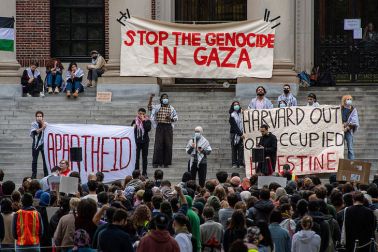
In 1932 a young English art historian recently returned from his travels sent an enthusiastic article to The Spectator about a series of brand new murals he had seen in the courtyards of the Ministry of Education in Mexico City:
All these paintings [he wrote] are conscious expositions of Communism. The ultimate object … is always propaganda … to expound the lesson of Communism, just as that of the mediaeval artists was to expound the lesson of Christianity … If mediaeval art was the Bible of the Illiterate, these frescoes are the Kapital of the Illiterate.
The young historian’s name was Anthony Blunt and the Mexican artist who had so impressed him was Diego Rivera. The work that Blunt described has since become a national monument and must be one of the greatest artistic tour de forces of the 20th century. Starting from scratch Rivera re-mastered a lost craft and within six years had executed what is arguably the greatest series of frescoes anyone had achieved for over 200 years. In a total of 279 panels covering 1,585 square metres of wall, he set out his vision of Mexico’s future. In panels entitled ‘The Liberation of the Peon’, ‘Wall Street Banquet’, ‘The Burning of the Judases’ and ‘Day of the Dead’, and in the inspired series of grisaille showing the achievements and promises of scientific research, Rivera drew up a Revolutionary political blueprint, enriched by allegories and prophecy.
Rivera’s work was commissioned by another visionary, the politician José Vasconcelos, who in the aftermath of the Mexican Revolution was determined to educate a largely rural and illiterate population. In this onslaught on ignorance, mural art in public spaces was intended to play a leading part, and so Rivera — with his contemporaries José Clemente Orozco and David Alfaro Siquieros — was put to work.







Comments
Join the debate for just £1 a month
Be part of the conversation with other Spectator readers by getting your first three months for £3.
UNLOCK ACCESS Just £1 a monthAlready a subscriber? Log in